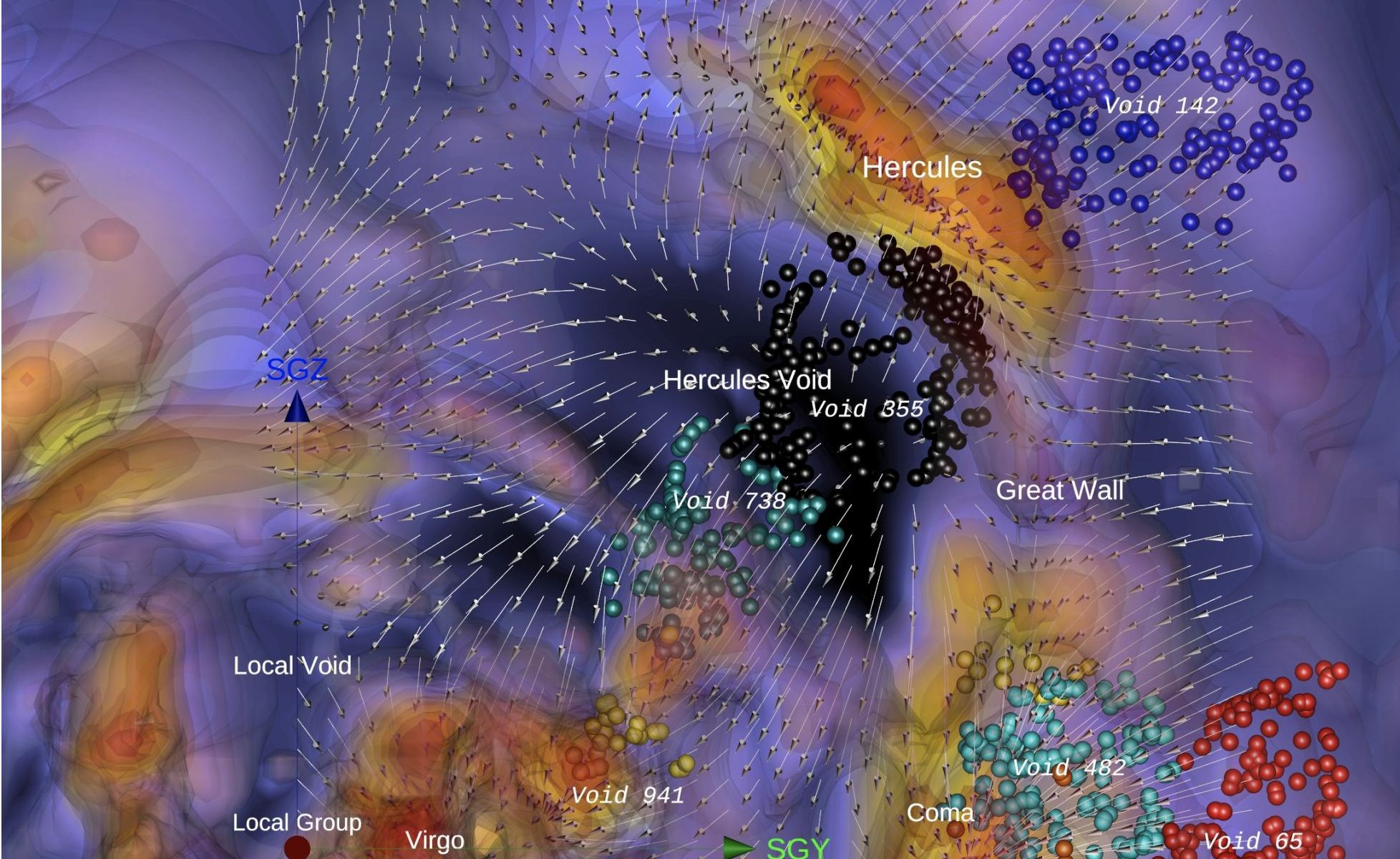The large scale structure of the universe is dominated by vast empty regions known as cosmic voids. These voids appear as holes hundreds of millions of light years across in the distribution of galaxies. However, new research shows that many of them may surprisingly still be filled with dark matter.
At the very largest scales in our universe, galaxies are not scattered around randomly like salt thrown on a table. Instead they follow a pattern known as the cosmic web. This is the largest pattern found in nature. The cosmic web is made of galaxies the same way that your body is made of cells…if your cells were a million times smaller.
Filling up the entire observable universe and beyond, the cosmic web is made of a series of interlocking filaments, clusters, and walls. Sitting between all those structures are the vast empty regions called cosmic voids. At the smallest scales these voids are 20 million light years across.

However, our observations of the large scale structure of the universe do not reveal the entire story. That’s because we can only see galaxies, which are a minority of all the mass in the universe. Most of the mass, somewhere around 80%, is made of dark matter, which is a mysterious form of matter that does not interact with light.
Scientists have been studying the nature of dark matter and the relationship between it and normal matter for decades using sophisticated computer simulations. Most recently, a team of researchers used simulations that represent the local volume of our universe to study the seven nearest voids to the Milky Way.
They found that while the giant gaps in galaxy distributions could be identified as voids, they were not always empty of dark matter. Indeed, half of them did not even have densities below the average density of the universe.
The astronomers were able to explain this result by the fact that not all voids are the same. Some voids appear as smaller pockets within a larger structure that is on average higher density than the rest of the universe. Other voids, typically the largest ones, expand to hundreds of millions of light-years across and take up a sizable chunk of the volume of the universe on their own.
The smaller voids that arise as pockets inside of larger structures are not fully empty of dark matter, while the largest ones are completely devoid of matter in their centers.
Understanding voids helps astronomers understand the overall structure and evolution of the universe. The researchers hope that by peering deeply into these abysses, we can also better understand the relationship between dark matter and normal manner.

